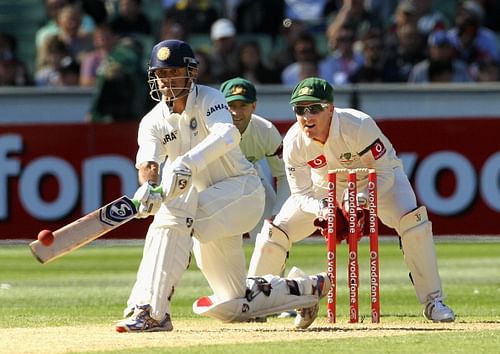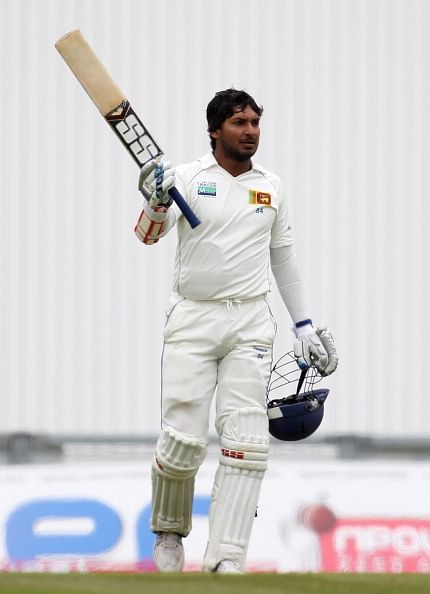
The Ideal No. 3: A comparison of the greats
“Comparison is the death of joy”, said Mark Twain. But alas, that is exactly what I set myself to do.
In Test cricket, the number three position has always been considered the toughest position to wield the willow at. So obviously, it’s no flabbergasting or astounding fact that almost every team sends in its best batsman one drop.
Widely recognized as the most crucial position in a lineup, a number three needs to have the hunger and temperament to play a long innings. He needs to possess great mental strength to weather all kinds of alien conditions, and physical stamina to bat on and on and on. Technical brilliance is a must, with the ability to play the quicks, medium pacers, and spinners with ease and the skill of adapting to any situation. And that is the difference between a good number three and a great one. A good number three checks most of these boxes. A great one checks all.
In the last couple of decades, we have been lucky to witness the best in the business. Rahul Dravid, Ricky Ponting, Kumar Sangakkara. Men who have batted their hearts out at number three. Is there any one man who stands out? Is it possible to rank them based on their statistics, or do we have to go past that?

Rahul Dravid sweeps
Let’s start with India’s go-to man. Rahul Dravid. Just the sheer weight of time he’s spent at the crease (44,129 minutes, the highest in Test history) speaks volumes about his concentration levels and temperament. His career average, 52.31, is not too dissimilar to his no. 3 average, 52.88. The first player to make a Test century in every Test playing nation, the Wall has an away average that is greater than his home average. For most part of his glorious career, he’s not been shielded by a solid opening stand. So coming in to bat with scorers still drinking their first cup of tea is something that happened more often than not. Every time he walked into bat, there was almost a predictable sequence; he’d weather the new ball, tire the pacers, make the spinners dance to his tunes, and slowly and steadily build the Indian innings around him. In the matches where he has made his 36 tons, India has only lost four, three of which came in the disastrous tour of England in 2011.
Ponting, on the other hand, is a natural stroke player. However, he has been luckier than Dravid to have an excellent pair of openers who would generally give him some time, rather than having to walk in with the score at none for one. Does that mean he had a slight advantage with respect to have some protection from the swinging new ball? To an extent, yes. Unlike Dravid, his home average (56.67) is significantly greater than his away average (45.91). But what gives him the edge is his capacity to win matches single handedly. Rarely did he not use the pace of his scoring to play to his advantage, which lead to his unique ability to stroke his way to huge centuries and individually determine the direction of an entire series. Not too many could dominate a bowling attack so thoroughly and so effortlessly. Another point to Ponting’s credit is the fact that more than half of his runs have come with the added responsibility of captaincy.

Kumar Sangakkara celebrates
Kumar Sangakkara. Here’s another man who’s defied the best of bowling attacks, and batted for unimaginable intervals of time in a team that didn’t boast of a consistent opening pair who would weather the storm. He possesses an average greater than both Dravid and Ponting, and still has maybe a couple of years of Test Cricket left in him. Having had the advantage of spending countless hours batting against Muralitharan in the nets, playing spinners comes to him quite naturally. He enhanced his reputation of playing fast bowlers with ease, after toying around the likes of Dale Steyn and Morne Morkel ever so often. Keeping wickets for most part of his career has never deterred him from coming in at three and playing a typically long innings that we’ve got so accustomed to watching. His average in Test wins is a whopping 74.33, and no more need be said about his importance in the team’s success.
And then there are Hashim Amla and Jonathan Trott – both of whom have shown tremendous potential and wonderful temperament, but it would be too early to classify either as great. Jacques Kallis is one man who checks all the boxes that make a great number three, but has spent most of his career batting at four.
While I’m afraid it’s almost disrespectful to choose one amongst these absolute legends, I must adhere to my initial promise to do so. Well, ranking them based only on cricketing reasons seems to be an impossible, incredible task. There is no right or wrong answer. However, for reasons beyond cricket, my vote would have to go to Rahul Dravid. As Shane Watson said, he is the nicest guy to have ever stepped on the cricket field.